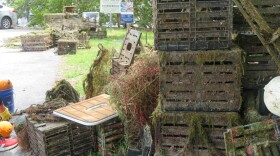-
Twenty million dollars will go toward the Biscayne Bay water quality improvement projects, bringing the state's total investment in the bay to $100 million since 2021. DeSantis announced the new funding at a press conference on Tuesday at Florida International University's Biscayne Bay campus.
-
Charges of seaman's manslaughter have been referred to the DOJ against parties involved in the towing company operating the vessel and barge that struck the sailboat, killing killed three children.
-
‘We’re scattering the seeds. We have to wait for the oaks to grow up.’
-
A lawyer for the family of Calena Gruber, who survived a deadly crash aboard a sailboat crash with a barge in Biscayne Bay, says the family is weighing a potential lawsuit.
-
Family and others posting to social media, along with South American media, have ID'd the deceased as Mila Yankelevich, 7; Erin Victoria Ko Han, 13; and Arielle Mazi Buchman, 10, whose death was reported Sunday.
-
The sailboat was carrying a group of children participating a sailing summer camp. According to FWC, preliminary information indicates that the barge struck the boat.
-
Elkhorn coral babies, affectionately called "Flonduran" corals by researchers at the Rosenstiel School at the University of Miami, were planted in Biscayne Bay on July 1. This is the first time internationally crossbred corals have ever been planted in wild reefs.
-
A dozen boat teams and even more shoreline volunteers participated in the latest Derelict Trap Rodeo, part of Friends of Biscayne Bay's efforts to restore the bay.
-
Barrier islands like Key Biscayne — vulnerable to sea level rise and tropical storms — are in the eye of the property insurance crisis, with owners seeing huge premium hikes and policy cancelations.
-
Miami-Dade County's latest plan to protect against stronger storms and rising sea levels involves closing off most of Biscayne Bay from the Atlantic Ocean with natural and man-made barriers.
-
The study, the first authorized to look at the system since the Everglades restoration plan more than two decades ago, will deal with sea rise.
-
A large, slow-moving Category 4 storm like Hurricane Ian would push a catastrophic surge across much of coastal Miami-Dade many times worse — and extending much farther inland — than Irma did in 2017.
Play Live Radio
Next Up:
0:00
0:00
Available On Air Stations










